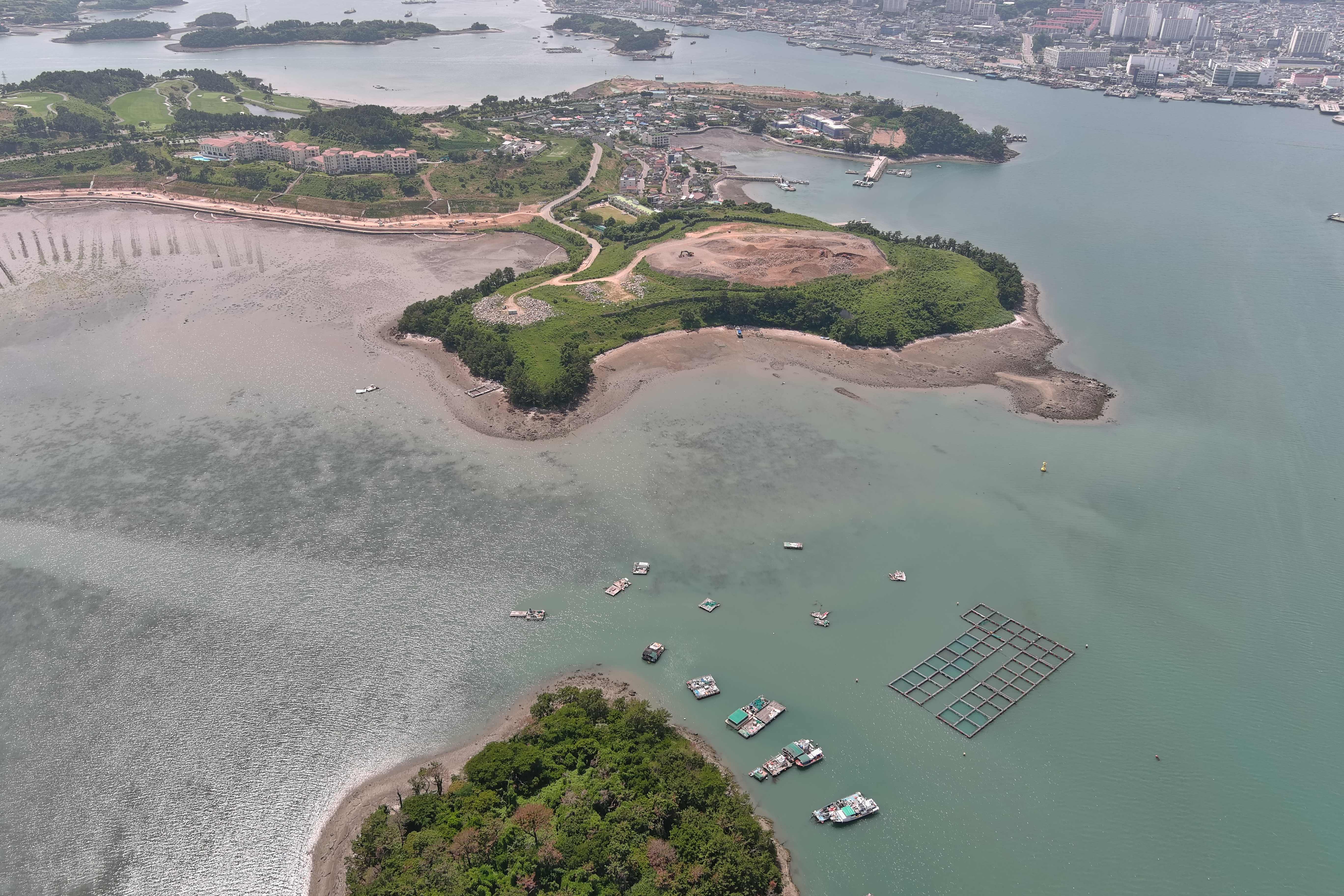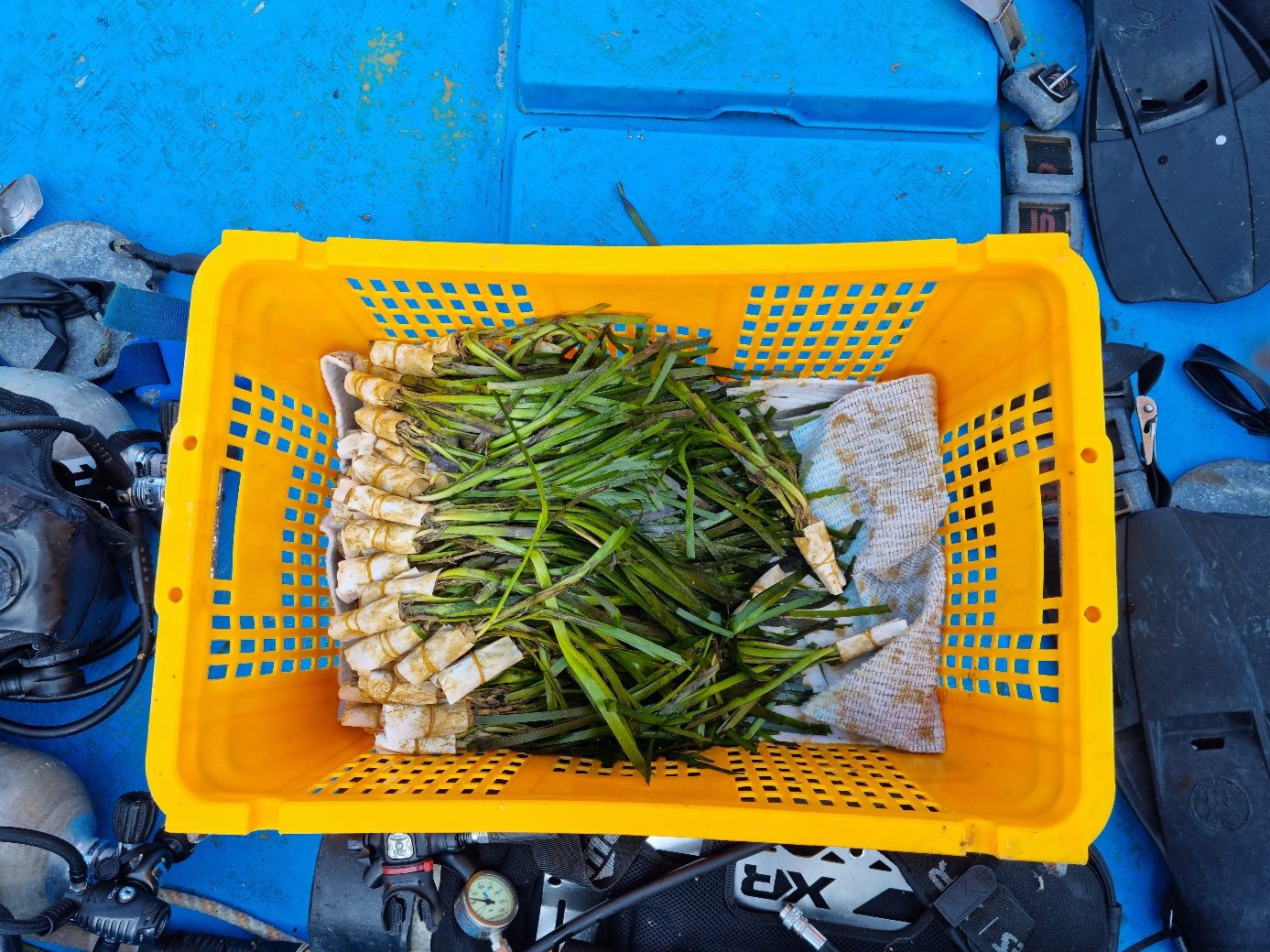Can you recall that LG Chem planted seagrass in the sea of Yeosu, Jeollanam-do, Korea? (Related Post: LG Chem restores sea forest with sea grass to build a sustainable future) It was a part of ‘Seagrass Habitat Restoration and Research Project’ initiated to preserve the marine ecosystem and biodiversity. Now, stunning news is coming from the seagrass colony planted by LG Chem. Today, we share what’s been happening in these meadows of seagrass.
The Barren Ground Phenomenon,
Sea Desertification Due to Global Warming

The shore of Yeosu where the Seagrass Habitat Restoration Project is taking place
Global warming is causing environmental changes, and the ocean is not an exemption. The ‘sea forests,’ where seaweeds flourish, absorb carbon dioxide, a major cause of global warming, through photosynthesis. However, greenhouse gas emissions continue, and development for human convenience persists, leading to the destruction of these sea forests. As a result, the climate crisis is gaining steam.
As sea forests gradually shrink, changes have occurred in the marine ecosystem. Just as desertification happens on land when trees and plants decrease, ‘sea desertification’ occurs in the ocean. This is known as the ‘Barren Ground Phenomenon.’ It refers to the whitening of underwater calcium carbonate, which adheres to rocks, the seabed, and marine organisms as seawater temperature rises due to global warming. As a result, the ocean becomes more alkaline, and seaweed decreases. Consequently, marine life that relies on seaweed as a staple food also diminishes, leading to the gradual devastation of the marine ecosystem.
Initiation of Seagrass Colony Restoration and Research Business

Seagrass used in the Seagrass Habitat Restoration Project
LG Chem initiated the seagrass habitat restoration project to reduce the barren ground phenomenon and revive the marine ecosystem. Seagrass is a type of marine plant that blooms in the ocean. It absorbs carbon and, along with salt marsh plants and mangroves, is classified as ‘Blue Carbon.’ One colony of seagrass can absorb up to 500 tons of carbon per hectare (10,000 m3).
The seagrass habitat restoration project is expected to continue until 2026, with plans to expand the seagrass meadows to a scale of 10 hectares (100,000m3), which is equivalent to 14 times the size of a soccer field. Once the sea forests are restored with seagrass, it is anticipated that not only will carbon absorption be enhanced, but the protection of marine ecosystems and the conservation of various marine species will also be achieved.
Progress of Seagrass Colony Restoration
Now that it’s 2024, what has become of seagrass planted by LG Chem?
LG Chem transplanted seagrass into the empty spaces between large and small seagrass colonies in the waters of Yeosu, connecting the patches of seagrass. As a result, the transplanted seagrass did not wither or die but instead expanded naturally along with the native seagrass. The area has grown by approximately 2.8 hectares, equivalent to four football fields. The expansion led to absorption of about 1,400 tons of carbon annually. The density of the transplanted seagrass has also increased, now growing to a similar level to that of natural seagrass colonies.
Not only have the seagrass colonies grown, but the number of marine species visiting the sea forest is also on the increase. At the initiation stage of the seagrass restoration project, about 17 species of organisms, such as starfish and marine worms, were found in the seagrass habitats. Now, we can observe 56 species of marine life, including blue crabs, cuttlefish, phytoplankton, and especially seahorses, which are considered indicators of ecosystem restoration. The return of seahorses, known to inhabit clean waters, to the seagrass colonies is a clear sign that the marine ecosystem is being restored through the seagrass plantation project.
LG Chem plans to transplant an additional 20,000 seagrass plants this year. The transplantation work will continue until 2026, when the seagrass habitat restoration project is set to be completed. We hope that the transplanted seagrass colonies will take root in the ocean and contribute to the restoration of the marine ecosystem. We envision that, through this project, diverse marine species will return to the waters of Yeosu, swimming among the seagrass as they once did. The seagrass habitat restoration project can only be carried out with the support of LG Chem’s many partners. Please keep your interest and support for this initiative, as we create a sustainable marine ecosystem!
 The shore of Yeosu where the Seagrass Habitat Restoration Project is taking place
The shore of Yeosu where the Seagrass Habitat Restoration Project is taking place Seagrass used in the Seagrass Habitat Restoration Project
Seagrass used in the Seagrass Habitat Restoration Project
There are no comments yet! Be the first to let us know your thoughts!